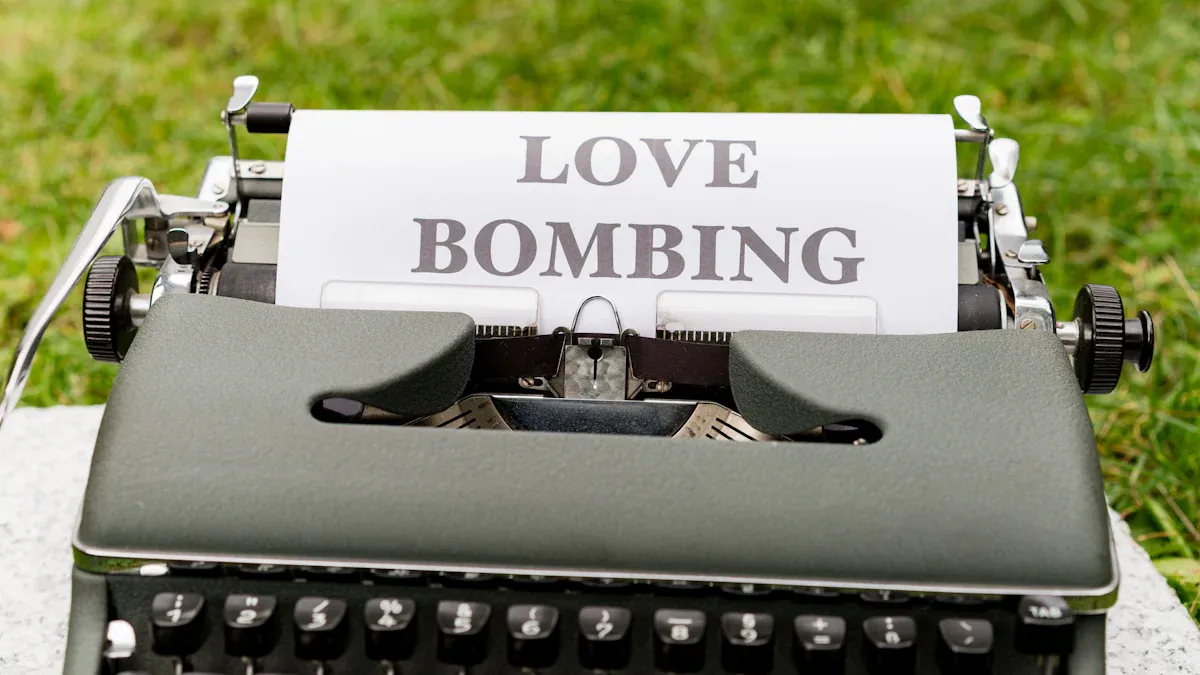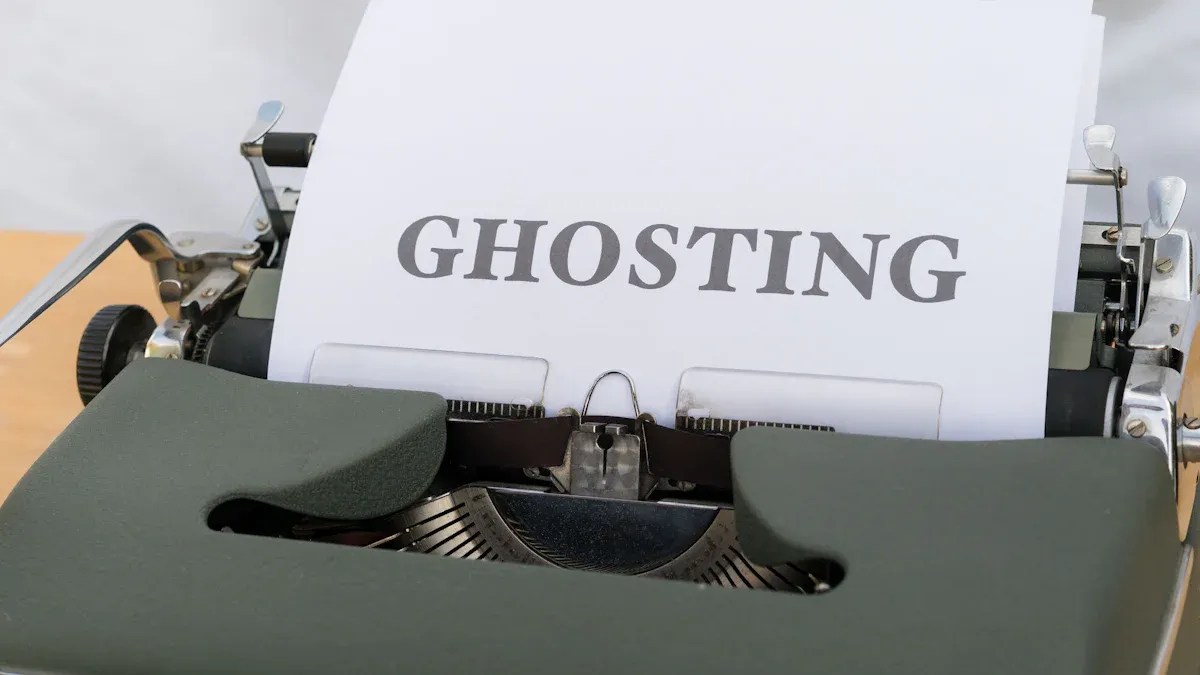The 4 Stages of a Narcissistic Abuse Cycle: Idealize, Devalue, Discard, Hoover

What Are the Stages of Devaluation and Discard in Narcissistic Relationships
You might see four main stages in the devaluation discard cycle narcissistic relationship. These stages happen again and again. This can make you feel confused. Studies show the stages look like this:
Stage | Description |
|---|---|
Idealization | You feel important because the narcissist treats you very well. |
Devaluation | You hear mean comments and notice the power changing. |
Discard | You might go through a sudden breakup. You feel hurt and confused. |
Hoovering | The narcissist tries to win you back with charm. They promise to change. |
Knowing these patterns helps you stay alert. It also helps you protect yourself. You deserve to feel safe and get better.
Key Takeaways
There are four stages in narcissistic relationships. These are idealization, devaluation, discard, and hoovering. Knowing these stages helps you see bad patterns.
In the idealization stage, the narcissist gives you lots of love. You get a lot of attention. This feels great but is used to control you.
In the devaluation stage, you get criticized a lot. The narcissist uses emotional tricks. This can hurt your self-esteem. It can make you feel confused.
The discard stage makes you feel left out and sad. The narcissist may find someone new very fast. This makes it hard to know what went wrong.
Hoovering happens when the narcissist wants you back. They use promises and charm. Be careful so you do not get trapped again.
Not Sure If You Are Been Gaslighted?
Sometimes it's hard to recognize gaslighting and emotional manipulation. Our Gaslighting Check app helps you identify patterns and provides personalized guidance based on your specific situation.
Try Gaslighting Check App NowStages of Narcissistic Abuse
The stages of narcissistic abuse happen again and again. This repeating pattern is called the narcissistic abuse cycle. There are four main stages: idealization, devaluation, discard, and hoovering. Each stage has its own signs and actions. If you know about these stages, you can spot the devaluation discard cycle narcissistic relationship and keep yourself safe.
The cycle usually goes like this:
Phase | Description |
|---|---|
The narcissist treats you like you are perfect. They give you lots of love. | |
Devaluation Phase | You get criticized and feel emotionally controlled. |
Discard Phase | The narcissist suddenly leaves or ends things. |
Repetition Stage | The cycle might start again if the narcissist wants more attention. |
You might feel mixed up when the cycle repeats. Small things can make the narcissist feel upset. You may try to make them happy, but this keeps the cycle going. The narcissist uses these steps to feel strong and in charge.
Idealization Stage
In the idealization stage, you feel very special. The narcissist puts you above everyone else. They show lots of love and charm. You might think you found the best partner ever. This stage starts the narcissistic abuse cycle and leads to the devaluation discard cycle narcissistic relationship.
You get lots of attention and love.
The narcissist acts nice to win you over.
You may see love bombing with gifts and praise.
The relationship feels wonderful, but the love can be too much.
The narcissist ignores problems and wants you to be their ideal.
You might not see problems because everything seems great.
This stage does not last long and ends fast.
You may also notice these tricks:
Description | |
|---|---|
Counterfeit concern | The narcissist pretends to care so you trust them. |
Data Mining | They ask questions to learn what you like and dislike. |
False Self | The narcissist acts like your dream partner and hides their real self. |
Future faking | They make big promises about your future to keep you interested. |
The idealization stage makes you feel close to the narcissist. You may miss warning signs because the attention feels nice. This stage sets up the rest of the narcissistic abuse cycle.
Devaluation Stage
The devaluation stage starts when the narcissist gets bored or loses interest. You see changes in how they act. The narcissist begins to criticize you and use emotional tricks. This stage is important in the devaluation discard cycle narcissistic relationship.
The narcissist uses different ways to put you down.
You may lose confidence in yourself.
You try hard to avoid fights.
The narcissist may make you depend on them for feelings.
The devaluation stage can hurt your mind. You may feel upset and scared. Constant criticism makes you feel bad about yourself. The narcissist may keep you away from friends and family. You might feel alone and have anxiety or sadness. It gets hard to trust others because of the tricks. This stage keeps you stuck in the narcissistic abuse cycle.
Discard Stage
The discard stage happens when the narcissist leaves or stops caring. You may feel shocked and alone. This stage is another part of the devaluation discard cycle narcissistic relationship.
You see less jealousy and control.
Their true personality shows up.
The narcissist acts like they do not care.
You may be replaced quickly as they look for new people.
They criticize you more before ending things.
The narcissist may stop talking to you and ignore you.
They keep secrets and push you away.
The narcissist may change the story about your relationship.
You might notice these actions:
The narcissist throws away things that matter to you.
They blame you for problems.
You get the silent treatment as punishment.
Their moods change quickly and are hard to predict.
The narcissist does not talk about future plans.
The discard stage can make you feel lost and sad. You may not understand why it happened. This stage often leads to the next part of the narcissistic abuse cycle.
Hoovering Stage
After the discard stage, the narcissist may try to get you back. This is called hoovering. The narcissist uses many tricks to pull you in and restart the devaluation discard cycle narcissistic relationship.
You may get gifts or big apologies.
The narcissist acts like the victim to get your sympathy.
They make you feel bad for leaving or not helping.
You hear promises about a great future together.
The narcissist pretends to have problems to get your attention.
They make up emergencies so you will respond.
You may run into them by accident.
The narcissist uses friends to pressure you.
They remind you of good times to make you forget the pain.
Hoovering can make you wonder if you should go back. The narcissist wants to be in control and start the narcissistic abuse cycle again. If you know these tricks, you can protect yourself and break free from the cycle.
Devaluation Discard Cycle Narcissistic Relationship

Behaviors to Watch For
You might see many upsetting actions in this stage. The narcissist often acts in sneaky and mean ways. They may give you compliments that feel like insults. Sometimes, they ignore you or refuse to talk. You might notice them playing tricks with your mind. They can make fun of you or embarrass you. Gaslighting can make you question your own thoughts. They may put you down and always find fault with you. You might feel like you can never make them happy. This kind of abuse often means they blame you for things. They also try to control your feelings. The narcissist may want praise from other people. They might blame you for their bad choices. These actions show they are trying to control you. This is a sign the relationship is not healthy.
Passive-aggressive comments
Backhanded compliments
Stonewalling or ignoring you
Mind games and ridicule
Humiliation and gaslighting
Belittling and constant criticism
Seeking attention from others
Tip: If you notice these patterns, you can spot the three stages of the narcissistic abuse cycle. This helps you protect yourself from emotional abuse.
Emotional Impact
The cycle of abuse can hurt your feelings a lot. You may feel shocked and very confused. Many people feel deep sadness and pain. You might start to believe the mean things the narcissist says. Some people feel sad, worried, or even scared after this. You may feel like you are not good enough after being left out. The trauma bond makes it hard to walk away. Even if you know you should leave, it can be tough. The longer you stay, the more it hurts inside. Unanswered questions and feelings can slow down your healing.
Intense grief and despair
Loss of self-worth
Self-blame and anxiety
Depression and trauma bond
Warning Signs
You can find warning signs by looking at how problems are handled. Compare normal problems to narcissistic abuse. The table below can help you see the three stages of the narcissistic abuse cycle. This can help you avoid getting stuck in the cycle.
Aspect | Normal Relationship Issues | Narcissistic Abuse |
|---|---|---|
Nature of Conflict | Both people try to fix things together | One person tries to hurt or control |
Resolution Efforts | Both try to solve the problem | Only one tries, the other controls |
Note: If you see these warning signs or tricks, your relationship may not be healthy. Leaving a narcissist and breaking the trauma bond can help you get better.
Why the Narcissist Repeats the Cycle
Narcissist’s Motivations
You might wonder why a narcissist keeps doing the same hurtful things. Many experts think this happens because of deep problems with attachment and bonding.
Psychologically, attachment and bonding problems are at the core of pathological narcissism. This is the reason they demonstrate a predictable relationship cycle.
Narcissists often want power and control in relationships. They feel important when they can change how you feel. In romantic relationships, different types of narcissism affect what they want:
Type of Narcissism | Motivation in Romantic Relationships |
|---|---|
Extraverted Narcissism | Seeks power and control, wants to feel important. |
Antagonistic Narcissism | Desires power, reacts negatively if they feel less powerful. |
Neurotic Narcissism | Causes stress and conflict, leading to burnout in the relationship. |
You may see the narcissist go from being loving to being mean. They might start to criticize and trick you. People who go through this often feel confused. They may try to figure out why things change. This can make them depend on the narcissist for answers. The cycle keeps going because the narcissist always wants attention and praise.
Effects on the Victim
Going through this cycle can hurt your mind and body. You might start to doubt yourself and lose confidence. Many people get anxiety, depression, or even PTSD after this kind of abuse.
Low self-esteem: You might feel worthless after being put down.
Relationship issues: Trusting others and setting limits can get hard.
Mental health problems: Anxiety, depression, and PTSD can happen.
Physical health problems: Stress can cause headaches and sleep problems.
Difficulty functioning: Simple tasks may feel too hard to do.
You may also feel scared, guilty, or ashamed. This can make it hard to trust people. Over time, you might have trouble making healthy friendships. The cycle can make you feel stuck and unable to change things. This is called learned helplessness.
The theory of cyclic abuse suggests that abusive relationships follow a predictable pattern. Sustained exposure to this cycle can lead to learned helplessness in victims.
Noticing these effects is the first step to healing and breaking free from the cycle.
Breaking Free from a Narcissistic Relationship

Recognizing the Stages
You can start to heal by learning about the stages. When you notice the idealization phase, you see lots of charm and attention. This is called love bombing. It feels exciting and special, but it is just one part of the cycle. You may feel close to the narcissist, but this stage ends quickly. Next comes emotional withdrawal and criticism. You might feel confused and start to doubt yourself. The discard stage can make you feel alone and hurt. Knowing these patterns helps you understand the last stage of the narcissistic abuse cycle.
Stage | Description |
|---|---|
Idealization phase | You get lots of praise and affection. |
Devaluation | You hear criticism and feel distant from them. |
Discard stage | You feel left out or abandoned. |
When you spot these signs, you can break the cycle. Many people feel stuck and mixed up. You may notice you depend on them and have low self-esteem. The cycle of love bombing and discard keeps repeating. This makes leaving hard. Learning about these stages gives you strength to move forward.
Steps for Self-Protection
You can keep yourself safe by taking simple steps. Experts say you should set boundaries to stop manipulation. Do things that make you feel proud to boost your self-esteem. Build a support group to help you feel better. Take care of yourself to help your mind. Talk to a therapist who knows about narcissistic abuse.
Tip: Make your plans quietly and do not tell the narcissist. Ask a trusted friend for help.
Here are some steps you can try:
Make a safe plan to leave. Find a safe place and collect important papers.
Set boundaries to protect your feelings.
Write down any abusive actions.
Get legal help if you need it.
Stay calm and focused when you talk to them.
You can use the "gray rock" method to show little emotion. Call a domestic violence hotline for safety tips. Build a strong support system and use self-care like yoga. Talk to a trauma therapist for advice. Setting boundaries and using the no-contact rule helps you take back control and heal. Keeping away from the narcissist lowers the chance of more abuse. Work on healing by joining support groups, practicing mindfulness, and doing hobbies. The more you learn about narcissistic abuse, the stronger you get.
When you know the stages of narcissistic abuse, you can stay safe. You notice how narcissistic abuse changes your feelings and your life. You learn to see signs of narcissistic abuse early. You make rules to keep narcissistic abuse away. You get help when narcissistic abuse hurts you. You listen to your own feelings about narcissistic abuse. You understand that narcissistic abuse is not your fault. You find people who help you heal from narcissistic abuse. You take care of yourself to feel better after narcissistic abuse. You talk to people who know about narcissistic abuse. You get stronger after narcissistic abuse. You remember that narcissistic abuse does not control you. You keep moving forward after narcissistic abuse. You pick hope instead of narcissistic abuse. You become stronger every day after narcissistic abuse. You break away from narcissistic abuse.
Healing from narcissistic abuse can happen. You deserve to feel safe and happy.
FAQ
What are common signs that you are in a relationship with a narcissist?
You may notice a narcissist often seeks attention, ignores your feelings, and blames you for problems. They may use charm at first, then switch to criticism. You might feel confused or anxious because the narcissist changes moods quickly.
How does a narcissist react when you set boundaries?
A narcissist may get angry or try to make you feel guilty. You might see them ignore your limits or use tricks to break them. Sometimes, the narcissist will act nice to get you to change your mind.
Can a narcissist change their behavior over time?
Most experts say a narcissist rarely changes. You may hear promises, but the narcissist often repeats the same cycle. Therapy can help some people, but a narcissist usually avoids taking responsibility for their actions.
Why does a narcissist use the discard stage?
A narcissist uses the discard stage to regain control. You may feel shocked when the narcissist suddenly leaves or ignores you. They often look for new people to get attention. The narcissist wants to keep power in the relationship.
What should you do if a narcissist tries hoovering?
You can protect yourself by staying calm and not reacting. The narcissist may use charm or guilt to pull you back. Set clear boundaries and seek support from friends or a therapist. Remember, the narcissist wants to restart the cycle.